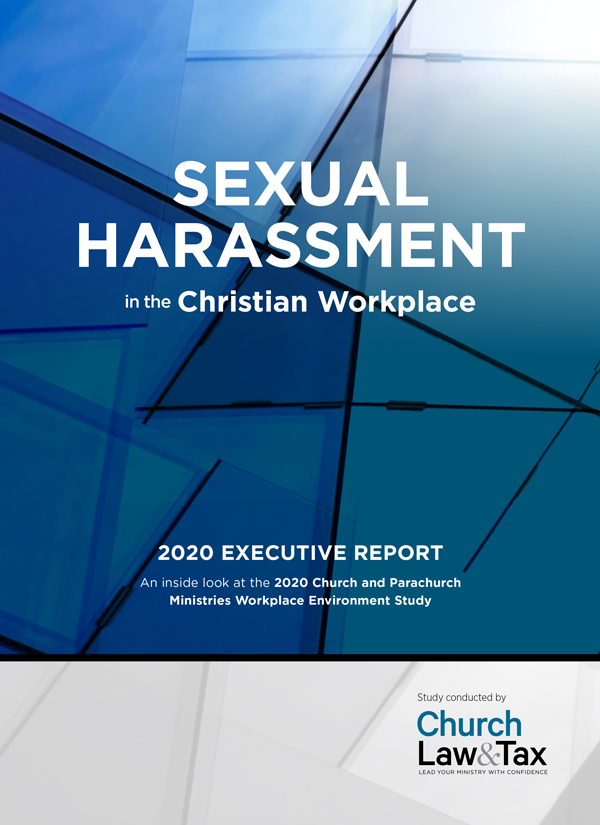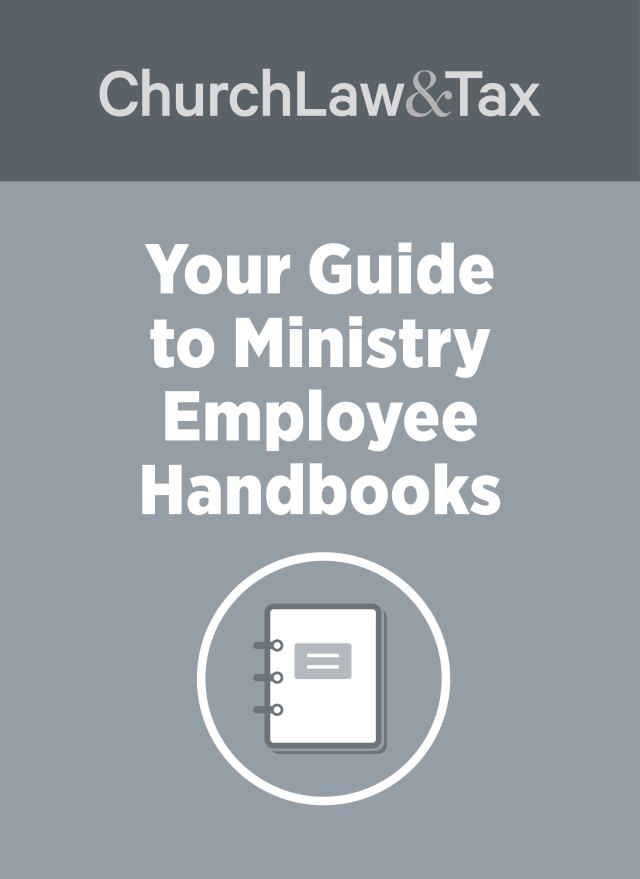Key point 8-12.5. Sexual harassment is a form of sex discrimination prohibited by Title VII of the Civil Rights Act of 1964. It consists of both "quid pro quo" harassment and "hostile environment" harassment. Religious organizations that are subject to Title VII are covered by this prohibition. An employer is automatically liable for supervisory employees' acts of harassment, but a defense is available to claims of hostile environment harassment if they have adopted a written harassment policy and an alleged victim fails to pursue remedies available under the policy. In some cases, an employer may be liable for acts of sexual harassment committed by nonsupervisory employees, and even nonemployees.
Key point 8-16. State and federal civil rights laws generally prohibit employers from retaliating against an employee for filing a discrimination claim or otherwise exercising rights provided by the law.
A federal district court in Oklahoma ruled that a church could be sued on the basis of sexual harassment for the conduct of a supervisory employee even though it was not aware of it at the time it occurred. A female church employee (the "plaintiff") claimed that over the course of a year she was sexually harassed by her supervisor. The harassment included both language and physical conduct. The plaintiff resisted her supervisor's advances, and this led directly to a reduction in her hours.
Plaintiff reported the sexual harassment to the church. After doing so, her hours continued to be reduced until she was terminated. The church insisted that the plaintiff quit her job.
The plaintiff sued the church, alleging sexual harassment, retaliation, wrongful termination, and negligence.
Sexual Harassment
Title VII of the Civil Rights Act of 1964 prohibits employers with 15 or more employees from discriminating in employment decisions on the basis of race, color, national origin, sex, or religion. Sexual harassment is a form of sex discrimination prohibited by Title VII. The courts have identified two types of sexual harassment—"quid pro quo" and hostile environment. "Quid pro quo" harassment refers to conditioning employment opportunities on submission to a sexual or social relationship, while "hostile environment" harassment refers to the creation of an intimidating, hostile, or offensive working environment through unwelcome verbal or physical conduct of a sexual nature. In general, an employer is liable for a supervisory employee's hostile environment sexual harassment.
The plaintiff claimed that she was subjected to a sexually hostile work environment due to the actions of her supervisor. The court noted that "a plaintiff may prove the existence of hostile work environment sexual harassment in violation of Title VII where sexual conduct has the purpose or effect of unreasonably interfering with an individual's work performance or creating an intimidating, hostile, or offensive working environment … For sexual harassment to be actionable, it must be sufficiently severe or pervasive to alter the conditions of [the victim's] employment and create an abusive working environment."
The church claimed that the plaintiff had not shown that any alleged harassment was sufficiently severe or pervasive to alter the conditions of her employment. The court disagreed, and rejected the church's request that the lawsuit be dismissed:
The court finds plaintiff has set forth sufficient evidence to create a genuine issue of material fact as to whether she suffered sexual harassment that was sufficiently severe or pervasive to alter the conditions of her employment and create an abusive working environment. Specifically, plaintiff has submitted evidence that for a year … she was verbally and physically sexually harassed by her supervisor, in that on a weekly, and near daily basis, he referred to her by sexually offensive names and on some 15 occasions, on a weekly and near bi-weekly basis, he either grabbed, groped, pinched, slapped, and squeezed her breasts or buttocks … or he forcibly pinned her against a wall with his body and kissed or tried to kiss her, or he directly requested she engage in sexual intercourse.
The court rejected the church's argument that it could not be liable for the supervisor's conduct since it had no knowledge it was occurring. It observed, "An employer is subject to liability to a victimized employee for a hostile environment created by a supervisor with immediate (or successively higher) authority over the employee." Since the supervisor was the plaintiff's immediate supervisor having immediate authority over her, "whether the church had knowledge of any alleged sexual harassment is not dispositive of the church's liability."
Retaliation
The court rejected the church's request to dismiss the plaintiff's retaliation claim that she had been wrongfully retaliated against her pursuing her harassment claim. Many federal and state civil rights laws that ban discrimination in employment prohibit employers from "retaliating" against employees who oppose discriminatory practices or pursue claims of discrimination. To illustrate, Title VII of the Civil Rights Act of 1964, the federal Age Discrimination in Employment Act, and the Americans with Disabilities Act all prohibit employer retaliation.
The court noted that for the plaintiff to establish a claim of discrimination she had to show that "(1) she engaged in opposition to discrimination; (2) she was subject to adverse employment action; and (3) a connection existed between the protected activity and the adverse action."
The church claimed that there was no retaliation since the plaintiff suffered no adverse employment action. The court disagreed:
The Court finds plaintiff has set forth sufficient evidence to create a genuine issue of material fact as to whether she was subject to an adverse employment action. Having reviewed the parties' submissions, it is clear there is a genuine dispute as to whether plaintiff quit her employment with the church or whether she was terminated. The court would also note that plaintiff has submitted evidence showing that her hours were greatly reduced both after she rejected her supervisor's alleged sexual advances and after she reported the sexual harassment to the church.
Accordingly, the Court finds that summary judgment should not be granted as to plaintiff's retaliation claim.
Constructive Discharge
The court refused to dismiss the plaintiff's claim of "constructive discharge," noting that "when an employer controls the working hours and reduces the number of working hours, a constructive discharge can occur if the employee quits."
Negligence
The plaintiff claimed that the church was responsible for its supervisor's acts of sexual harassment on the basis of negligence due to its failure to "investigate, respond, or discipline" the supervisor. In rejecting the church's request to dismiss this claim the court observed:
Employers may be held liable for negligence in hiring, supervising or retaining an employee. In such instances, recovery is sought for the employer's negligence. The claim is based on an employee's harm to a third party through employment. An employer is found liable, if—at the critical time of the tortious incident—the employer had reason to believe that the person would create an undue risk of harm to others. Employers are held liable for their prior knowledge of the employee's propensity to commit the very harm for which damages are sought … . The critical element for recovery is the employer's prior knowledge of the employee's propensities to create the specific danger resulting in damage.
The court concluded that there was sufficient evidence that the church was aware of prior acts of sexual harassment by the supervisor to allow this claim to proceed.
What this means for churches
This case is important because it demonstrates that a church may be liable for a supervisory employee's acts of sexual harassment even though it had no actual knowledge that they occurred.
Sexual harassment is a form of "sex discrimination" prohibited by Title VII of the Civil Rights Act of 1964. Equal Employment Opportunity Commission (EEOC) regulations define sexual harassment as follows:
a. Harassment on the basis of sex is a violation of Sec. 703 of Title VII. Unwelcome sexual advances, requests for sexual favors, and other verbal or physical conduct of a sexual nature constitute sexual harassment when (1) submission to such conduct is made either explicitly or implicitly a term or condition of an individual's employment, (2) submission to or rejection of such conduct by an individual is used as the basis for employment decisions affecting such individual, or (3) such conduct has the purpose or effect of unreasonably interfering with an individual's work performance or creating an intimidating, hostile, or offensive working environment.
This definition confirms the conclusion reached by numerous state and federal courts that sexual harassment includes at least two separate types of conduct:
1. "quid pro quo" harassment, which refers to conditioning employment opportunities on submission to a sexual or social relationship, and
2. "hostile environment" harassment, which refers to the creation of an intimidating, hostile, or offensive working environment through unwelcome verbal or physical conduct of a sexual nature.
An employer may be liable for a supervisor's acts of "hostile environment" sexual harassment even if it was not aware the acts were happening when they occurred. The basic rule may be stated as follows: If a supervisor creates an intimidating, hostile, or offensive working environment through unwelcome verbal or physical conduct of a sexual nature, this is "hostile environment" sexual harassment for which the employer will be legally responsible if the supervisor takes any "tangible employment action" against the employee. A tangible employment action includes "a significant change in employment status, such as hiring, firing, failing to promote, reassignment with significantly different responsibilities, or a decision causing a significant change in benefits." The employer is liable under such circumstances whether or not it was aware of the harassment.
An employer may be liable for a supervisor's acts of hostile environment sexual harassment even if it takes no tangible employment action against the victim. But, in such cases, the employer may assert an "affirmative defense" to liability. This defense consists of two elements:
i. The employer "exercised reasonable care to prevent and correct promptly any sexually harassing behavior." This generally means that the employer adopted a written sexual harassment policy that was communicated to employees, and that contains a complaint procedure.
ii. The victim "unreasonably failed to take advantage of any preventive or corrective opportunities provided by the employer or to avoid harm otherwise." This generally means that the victim failed to follow the complaint procedure described in the employer's sexual harassment policy.
As a result, it is a "best practice" for a church with employees to adopt a sexual harassment policy, since this will serve as a defense to liability for a supervisor's acts of "hostile environment" sexual harassment to the extent that a victim of such harassment does not follow the policy. 2012 WL 2912516 (W.D. Okla. 2012).

